Early sown varieties, Co43 and Bhavani (seasonality test) are past flowering and currently are in the ripening stage. As explained in Principles and Practices of Rice Production by S K De Datta,
“At the time of anthesis (blooming or flowering), the panicle is erect in shape. The panicles flower begins at the top, middle and lower thirds, occurring on the 1st, 2nd and 3rd day after stage – heading. Rice is highly self-pollinated. The florets open from 0900 to 1500 depending on variety and weather. They open early on bright days and late on humid and cloudy days. The stamens elongate and anthers move out of the flowering glumes as pollen is shed. The pollen grains fall on the pistil, a feathery structure, through which the pollen tube of the germinating grains will extend into the ovary. The lemma and palea then close.”
Further, the panicle takes 25 to 35 days to fully ripen. Grain development is a continuous process in the sequence of flowering and the grain undergoes distinct changes before it matures fully in 3 stages – The milky stage, Dough stage, and Yellowing & ripening stage. The milk stage is observed when a milky white substance begins to accumulate, usually seven to 10 days after heading. The dough stage occurs about a week later as the milky substance begins to change and become the texture of bread dough. When rice grains first become firm, they are at the physiological maturity stage.
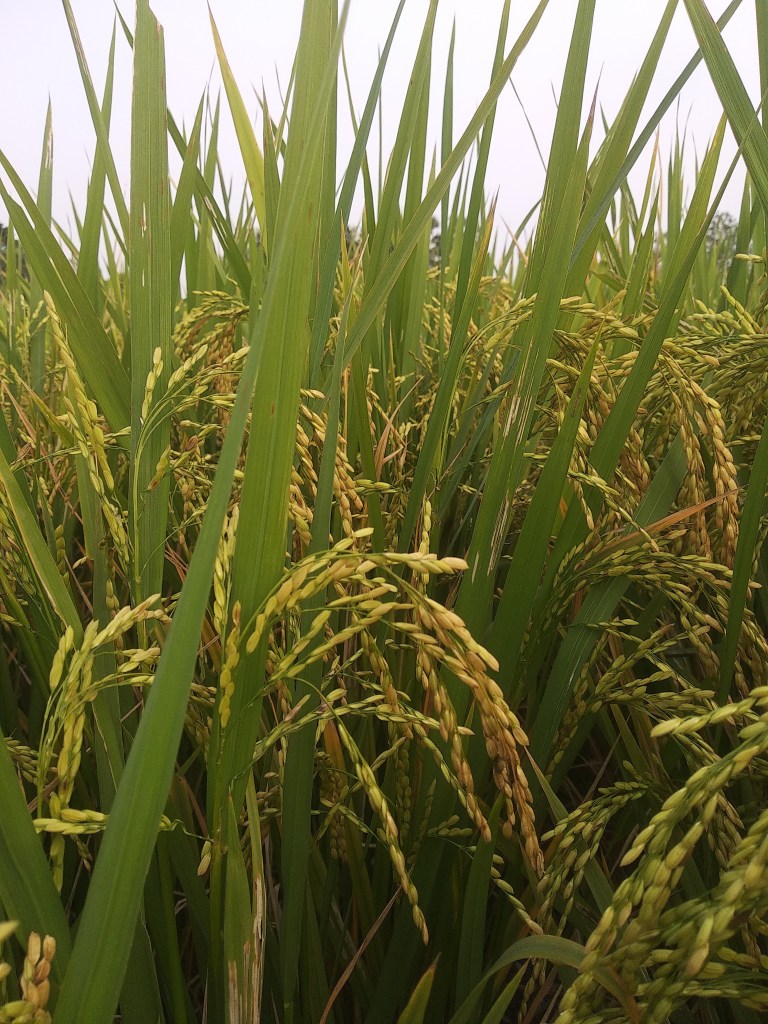
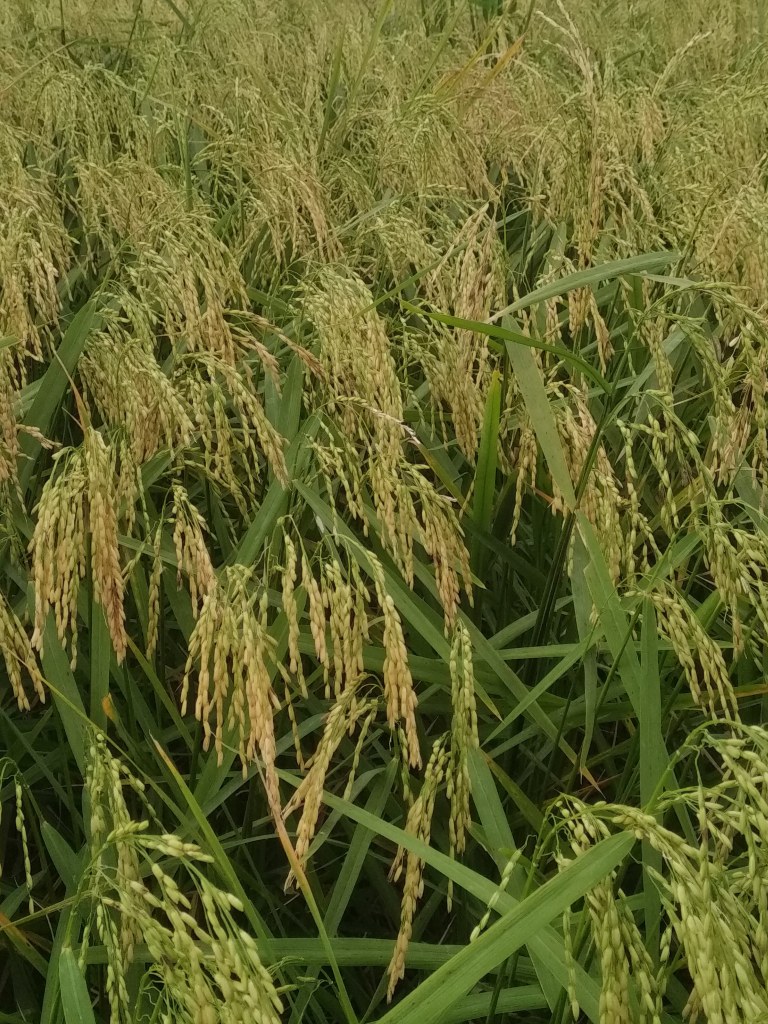
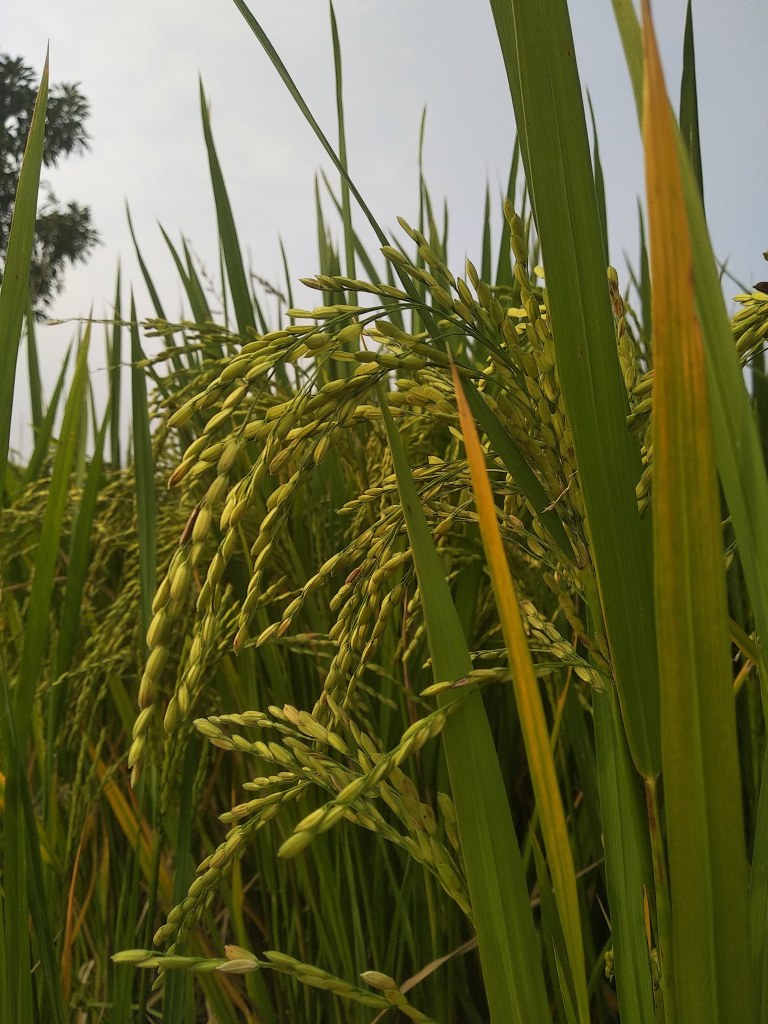
At this stage, we have the next round of pests circling the paddy fields – small birds – Finches and peacocks (Leaf rollers and stem borers are the first ones). At Annapurna, we host a large number of migratory paddy birds at the beginning of the paddy season who eat insects through the puddled fields where at the times young paddy seedlings become collateral damage. The paddy landscape includes tall, medium-sized trees scattered lightly throughout to host the diversity of birds to perch and nest on; which also keeps a fair check on the paddy insects-pest population. We also have a large number of peacocks on the farm who similarly serve Predatory skills as well as beauty.
With the paddy ripening, we now observe small birds flocking around the ripened panicles to pick grains. In the past season we observed peacocks keenly visit fields once the crop is fully ripened and lodged (on the ground), but this season we find them frequently visiting our semi-short variety – CO43 fields pecking on drooping panicles.
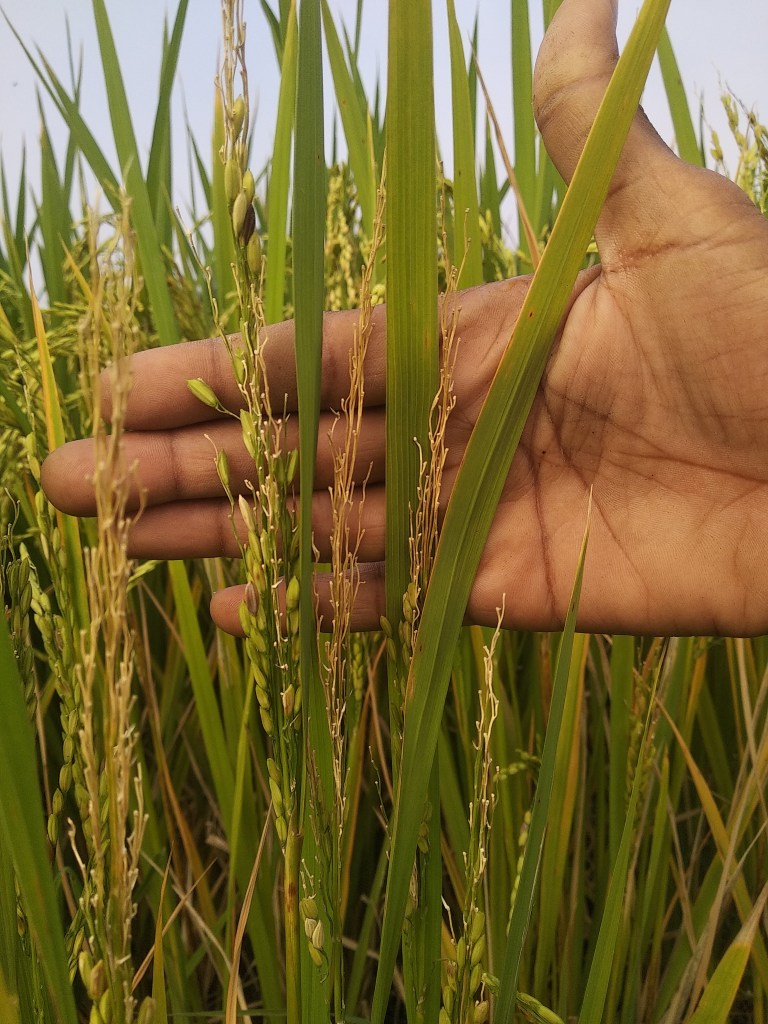
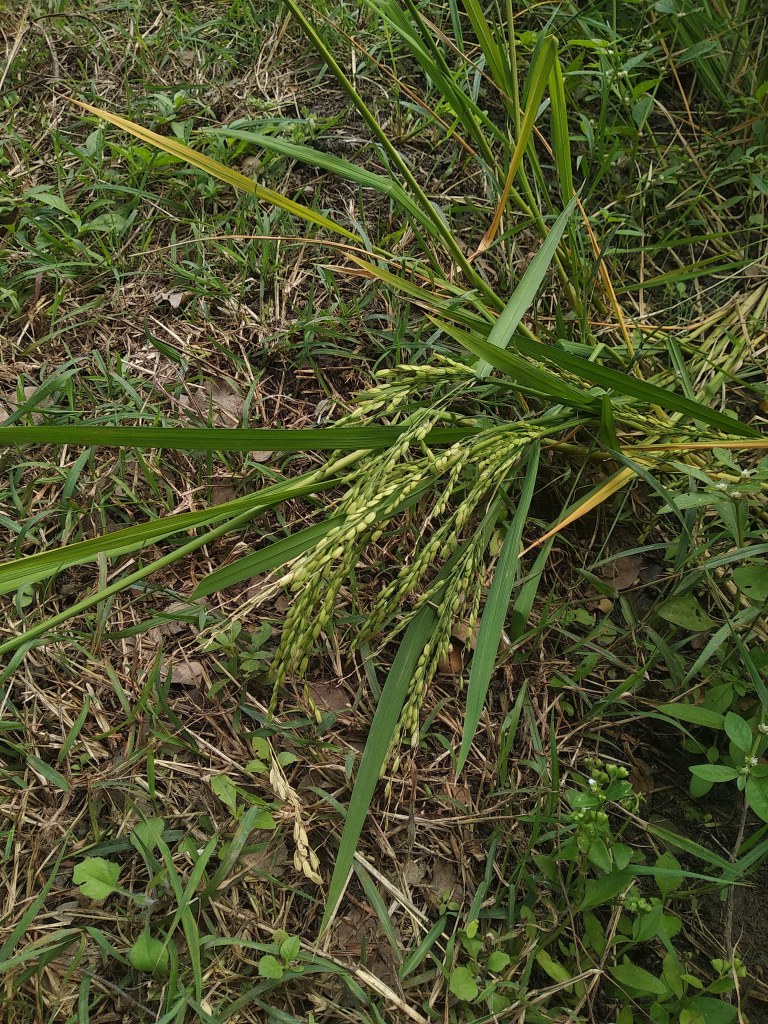

We manage to keep deer and wild boars away from the paddy with the electric fence which is also one of the elements that add to paddy economics. But the peacocks and birds may need a different solution, we will be busy quantifying the damage and exploring ways to manage such pests in the coming weeks.
